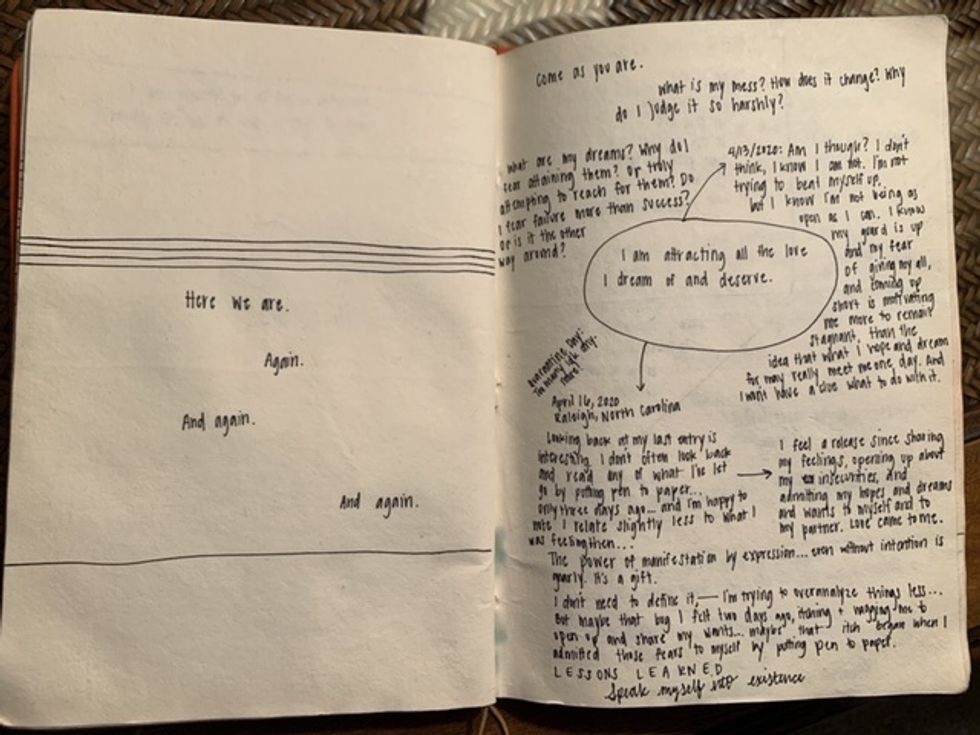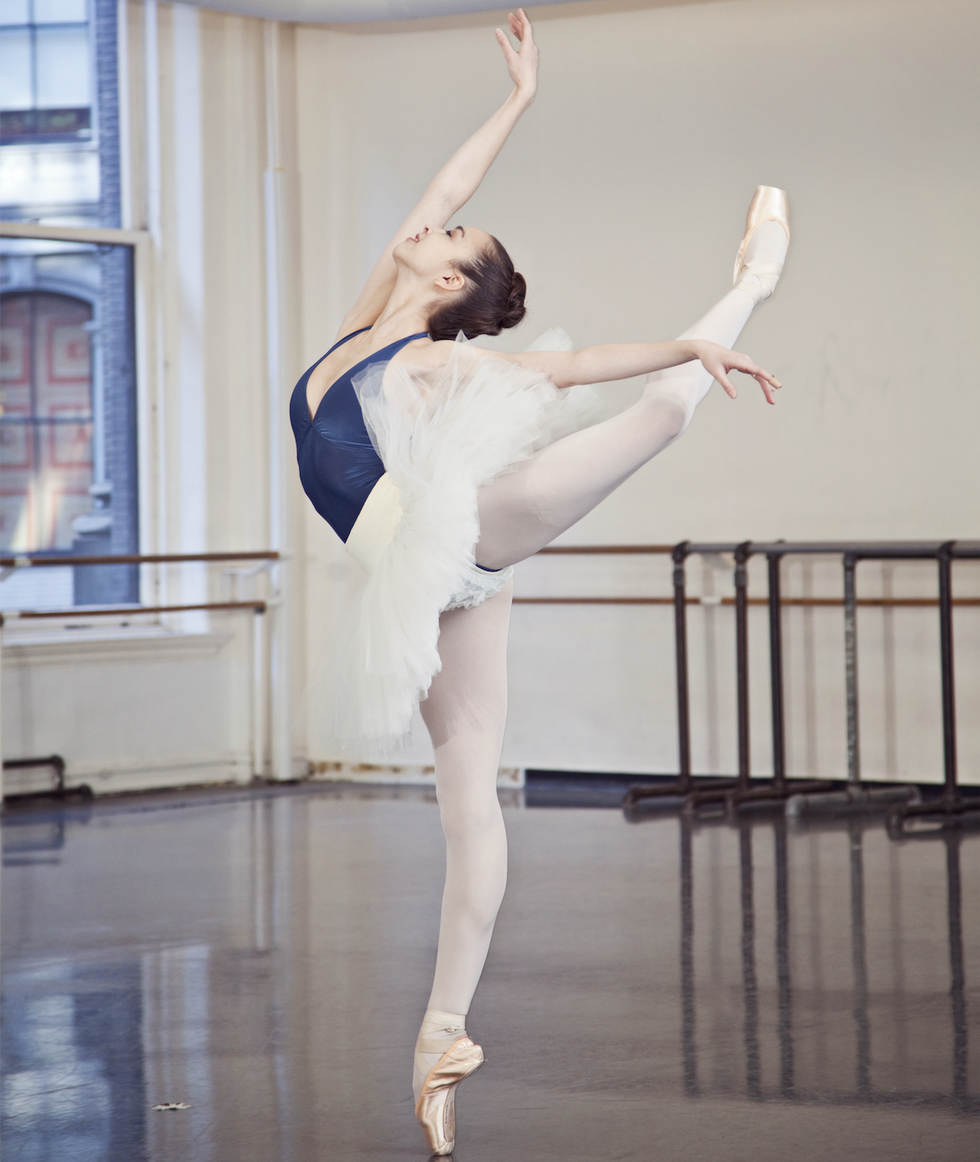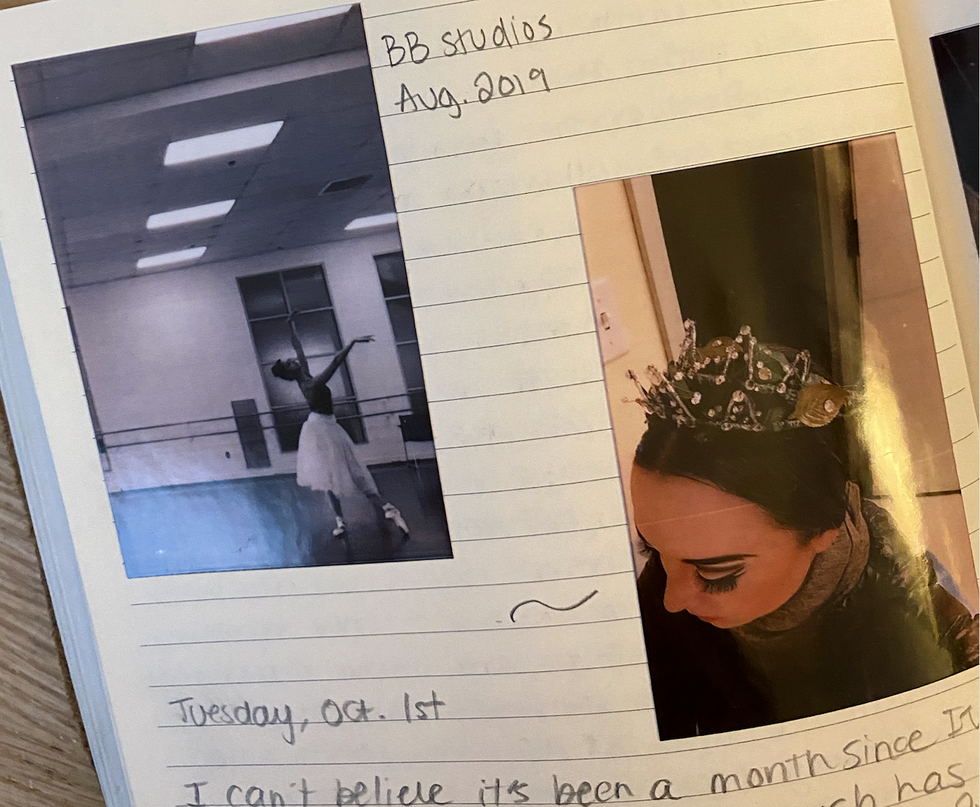How Journaling Can Improve Your Dancing—and Help You Cope With Life Right Now
After 45 minutes of technique at Center Stage Performing Arts Studio in Orem, Utah, class is cut 15 minutes short, and the senior company dancers are told to grab their journals. It’s a routine they’re familiar with, one their teachers employ whenever they sense the dancers need support.
Along with jotting down notes from class, the students are instructed to share aloud the things they appreciate in their teammates, then write down the individual compliments they receive. Within their diaries they’re creating a fortress of support they’ll be able to turn to when they’re struggling.
Now, more than ever, reflection is crucial to our well-being. When the world feels upside down, documentation and contemplation are two positive tools we can use to ground ourselves. Journaling can be used both to deepen our dance training and artistic discovery, and it also offers a therapeutic outlet.
For the dancers at Center Stage, journaling is incorporated into both technique and competition classes to promote goal setting and achievement. “At the beginning of each dance year, students sit down with their director and journals to write what they’d like to accomplish,” says Center Stage co-owner Kim Delgrosso.
The dancers also use their journals to document corrections and choreography. “Writing makes it a stronger learning experience,” Delgrosso says. “I see them racing to their journals to write down counts and questions during breaks. During private lessons, some teachers will require students to jot down what was discussed in their last rehearsal, and review the material before class so they are responsible for what they practiced.”
Journals can also offer an accessible channel for emotional healing in a field known for lacking mental health resources. “Sadly, dancers don’t often have a place to safely communicate their emotions,” says Dr. Lucie Clements, a dance psychologist in the UK. “They’re expected to keep them inside. While it’s best to find someone to speak to (like a therapist or a trusted friend), journaling is an excellent outlet.”
In order to get the most out of the practice, Clements recommends starting your day by documenting your goals once or twice a week. “Reflect on what you’d like to achieve and the approach you’d like to take to difficult scenarios,” she says. “Be careful not to make a huge list you can’t possibly tackle. Choose just a few key corrections. Then, at the end of the day, reflect on what happened. Did you meet your goals? What barriers did you encounter?”
From there, Clements advises writing down both your thoughts and feelings. “It’s easy to simply write down that you felt frustrated or disappointed, but articulating why you felt that way is particularly helpful.”
Clements also recommends recording moments of gratitude. “Research suggests that documenting 10 things you’re grateful for each day supports well-being.”
If writing isn’t for you, doodling or even just jotting down bullet points can be beneficial. “Doodling is just another form of creative expression, depicting what’s going on in your mind,” Clements says. “If you feel drawn to it, do it.”

Dancer Journalist: Catherine Kirk
A.I.M dancer Catherine Kirk keeps an informal, free-form journal. “It includes my thoughts, inspiring conversations, my schedule, my to-do list and recipes,” she says. “When I first joined A.I.M it included the names of the other dancers, elements of choreography, where I was supposed to enter and exit the stage, as well as time markers. Now, I write less about my roles and more about my artistry.”
For organization, she tries to include where in the world she is writing her entries from. “We travel a lot,” she says. “It’s helpful for me to document where we are, so that when I want to look back on certain experiences, I can find them easily based off of where I was when it happened.”

Courtesy Kirk
Kirk journals often, writing in a physical book and sometimes even writing quick entries in the notes on her phone when she’s away from her journal. “It grounds me,” she says. “These jottings are the most tangible thing that will be able to exist beyond my life. They bring me into the present moment, and away from distractions.”
That said, there have been times when Kirk has avoided her journal. “I recently lost my godmother, and before that I went through a bad breakup. I avoided journaling because it was so painful,” she says. “When I was ready, I returned to my journal and faced my feelings. Don’t beat yourself up if you need to take some time to process. You can always come back to it.”

Dancer Journalist: Paulina Waski
Boston Ballet’s Paulina Waski began journaling while dancing with American Ballet Theatre. “I was 16 years old when I started with ABT,” Waski says. “It was hard to adjust since everyone was so much older, and I felt a lot of pressure to do well at a young age. On top of that, I went through a breakup with someone in the company, and I was dealing with a changing body. I started writing down my experience, and it helped me cope.”
Waski says that as she put pen to paper, she found perspective on her challenges. “There are things that are hard to talk about, but when I write them down, I realize they aren’t so bad,” she says. “When I close my journal, I leave that painful experience in the past and move forward.”
Waski has documented each phase of her career ever since. She often returns to various entries depicting important or amusing moments. “One day my journal will help me write a memoir,” she says.

Most importantly, her journal has given her the motivation to keep dancing at times when she was tempted to give up. “There was a time where I had various injuries, one right after the other, and I was so frustrated that I considered pursuing a different career entirely. But when I read my old journal entries, I remembered all of the sacrifices I’d made.”
Waski journals roughly four times per week. She includes photos in her entries, as well. “When I danced Myrtha, my first principal role with Boston Ballet, it was such a big milestone after leaving ABT that I had to document it with photos,” she says.
According to Waski, journaling has made her a better dancer. “It’s allowed me to let go of negative emotions that might affect my performance. This career is so demanding; writing eases some of the burden.”
5 Low-Key Journal Apps That Writers Love
One of the most popular wellness trends of 2020 are journal apps that allow you to document your life on your phone or computer without much effort. Many offer prompts for what to write, a password to protect your content and reminders to journal regularly. Most also allow you to easily incorporate things like photos and videos (hello, rehearsal footage!).
Day One
- Available for iOS, macOS and Android
- Free and premium subscriptions ($35 per year)
- Widely regarded as one of the best journaling apps, Day One lets you keep multiple journals, and choose between a range of templates for each entry. Having both a calendar view and location view allows you to easily revisit old entries.
Momento
- Available for iOS
- Free, premium ($3.99 per year) and premium gold ($37.99 per year) subscriptions
- For social media enthusiasts, Momento imports data from Spotify, Instagram, Twitter, Facebook, YouTube, Uber and other feeds to automatically update your journal. You can organize entries by event: For example, Instagram photos you were tagged in surrounding your Nutcracker season can be grouped together.
Journey
- Available for Android, iOS, Windows and macOS
- Free and premium subscriptions ($29.99 per year)
- Journey works across a range of platforms, letting you journal anytime, on whatever device is closest. You are also able to share certain entries with friends and family if you want.
Promptly Journals
- Available for iOS and Android
- Starting at $2.99 per month
- Ideal for writers who care about aesthetics, Promptly allows you to print a customizable copy of your entries on acid-free paper. It includes separate guided journals for topics like grief, love story, childhood, gratitude, travel and everyday.
Five Minute Journal
- Available for iOS and Android
- One-time payment of $4.99
- As the name suggests, this low-stress option cues you to take just five minutes every day to jot down your thoughts. It also provides positivity prompts, like “What are three things you like about yourself?” and a daily motivational quote.



